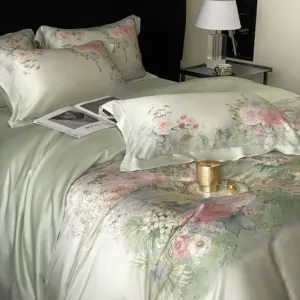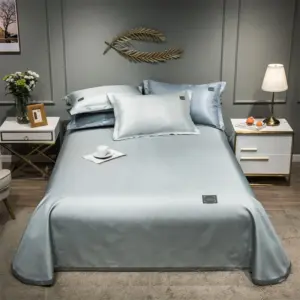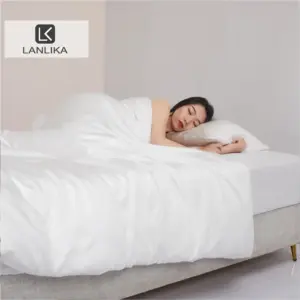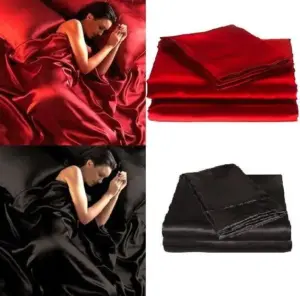Introduction: The Timeless Appeal of Silk and Its Ethical Alternatives
For thousands of years, silk has been treasured as one of the world’s most luxurious textiles. This remarkable fabric, first cultivated in ancient China and traded along the legendary Silk Road, continues to symbolize elegance and refined taste. Its unmistakable sheen, incredible softness, and natural temperature-regulating properties have made it a coveted material for everything from royal garments to modern luxury bedding.
However, as consumer awareness grows, many people find themselves at a crossroads between traditional luxury and ethical responsibility. The conventional silk production process raises questions about animal welfare and environmental impact, leading conscientious consumers to seek alternatives.
Enter vegan silk – an evolving category of textiles designed to replicate the desirable qualities of traditional silk without involving animal products. These innovative alternatives offer a promising path for those who desire luxury without compromising their ethical standards.
At Sanctuary Soft, we understand this dilemma intimately as specialists in both traditional silk and vegan alternatives. Our expertise in this unique textile niche allows us to offer a comprehensive comparison that helps you navigate these choices with confidence and clarity. Let’s explore the fascinating world of silk and vegan silk to help you make an informed decision about which luxury option best aligns with your values and preferences.
Understanding the key differences between traditional silk vs vegan silk comparison provides essential context for making an informed choice between these luxury options.
Understanding Traditional Silk: Nature’s Luxury Fiber
Traditional silk stands as one of nature’s most remarkable textile creations – a natural protein fiber with a unique combination of properties unmatched by most other materials. This extraordinary fabric originates from the cocoons of silkworms, specifically the Bombyx mori moth species, which has been domesticated for silk production for millennia.
What elevates silk to its premium status in the textile market is its distinctive combination of characteristics: exceptional softness, natural sheen, breathability, moisture-wicking abilities, and temperature regulation. These properties emerge from silk’s protein structure, creating a fabric that feels luxurious against the skin while offering practical benefits for comfort and wellbeing.
The journey from silkworm to sumptuous fabric involves a fascinating process that combines natural biological processes with careful human craftsmanship. Understanding this journey helps appreciate why silk has maintained its prestigious position in the world of luxury textiles.
Our silk fabric types complete guide provides deeper insight into the various silk varieties and their unique characteristics.
What Exactly Is Silk? Origins and Production
Silk is a natural protein fiber primarily produced by the larvae of certain insects, most notably the Bombyx mori silkworm. These specialized caterpillars secrete a protein-rich fluid that solidifies when exposed to air, forming the fine threads that create their protective cocoons.
The Bombyx mori silkworm, domesticated for over 5,000 years, produces what we know as mulberry silk – accounting for approximately 80-90% of all commercial silk worldwide. This variety is prized for its exceptional quality, consistent texture, and brilliant luster.
While mulberry silk dominates the market, several other varieties offer unique characteristics:
- Mulberry Silk: The gold standard, produced by domesticated silkworms fed exclusively on mulberry leaves, resulting in the finest, most uniform silk fibers
- Tussar/Tussah Silk: Created by wild silkworms, featuring a slightly coarser texture with rich, natural golden tones
- Eri Silk: Sometimes called “peace silk” as it allows the silkworm to emerge before harvesting, resulting in a matte finish and wool-like texture
- Muga Silk: A rare variety with a distinctive golden hue, produced in limited quantities in specific regions
Understanding whether Mulberry silk is vegan-friendly helps clarify important ethical considerations about traditional silk production.
The Traditional Production Process: From Cocoon to Fabric
The journey of silk begins with sericulture – the cultivation of silkworms. Farmers carefully control conditions like temperature and humidity while providing a steady diet of mulberry leaves to the growing caterpillars. After several weeks of feeding, the silkworms enter the cocoon-spinning phase, creating their protective silk shells.
Traditional silk harvesting involves collecting these cocoons before the pupae inside can mature and emerge. This timing is critical because once a moth breaks through the cocoon, it damages the continuous silk filament, significantly reducing its commercial value. The standard practice involves heating or boiling the cocoons with the pupae inside, which simultaneously kills the developing moths and softens the sericin (silk gum) binding the fibers.
After harvesting, skilled workers begin the reeling process, unwinding the incredibly fine threads from the softened cocoons. A single cocoon yields approximately 1,000-3,000 feet of silk filament, but these strands are too delicate to use individually. Several filaments are combined during “throwing” (twisting) to create stronger, workable silk thread.
The resulting threads then undergo weaving into fabric, followed by various finishing processes that enhance the silk’s appearance and handle. These meticulous production methods have remained remarkably consistent over centuries, though modern technology has improved efficiency in certain stages.
Our collection of premium mulberry silk sheets showcases the exceptional quality that results from this traditional production process.
Key Properties and Benefits of Traditional Silk
Traditional silk offers a remarkable range of properties that explain its enduring popularity:
- Unparalleled Softness and Smoothness: Silk’s protein structure creates an incredibly smooth surface at the microscopic level, making it exceptionally gentle against skin
- Natural Luminosity: The triangular prism-like structure of silk fibers refracts light, creating the fabric’s characteristic luster and subtle color depth
- Temperature Regulation: Silk acts as a natural thermal regulator, providing warmth in cool weather while remaining breathable and cool in warm conditions
- Superior Moisture Management: The fabric can absorb up to 30% of its weight in moisture without feeling damp, keeping skin comfortably dry
- Hypoallergenic Properties: Natural silk resists dust mites, mold, and many common allergens, making it ideal for sensitive skin
- Hair Protection: The smooth surface reduces friction that causes frizz, tangles, and breakage, benefiting hair health
- Impressive Durability: When properly cared for, high-quality silk can last for many years despite its delicate appearance
Quality silk is measured by its momme weight – similar to thread count but specific to silk. Premium silk typically falls within the 19-25 momme range, balancing luxury feel with practical durability. The silk grading system also ranks quality on a scale, with 6A representing the highest possible grade.
Understanding the difference between thread count vs momme weight helps consumers evaluate silk quality more effectively.
Drawbacks and Considerations of Traditional Silk
Despite its luxurious properties, traditional silk production raises several concerns:
Ethical Concerns: The conventional production process necessitates killing silkworms in their pupal stage. With approximately 3,000 silkworms required to produce one pound of silk, the scale of this impact is significant. For those prioritizing animal welfare, this aspect presents an ethical dilemma.
Environmental Impact: Traditional silk cultivation requires substantial resources. Water usage is considerable throughout the process – from growing mulberry trees to the final finishing stages. Additionally, conventional production often involves chemical treatments for processing and dyeing.
Land Use Requirements: Extensive mulberry orchards are needed to feed silkworms, potentially competing with food crops in certain regions. This agricultural footprint must be considered when evaluating silk’s overall environmental impact.
Maintenance Demands: Silk requires delicate care, including hand washing or dry cleaning, specific ironing techniques, and protection from prolonged sunlight. These maintenance requirements add to the lifetime cost of silk ownership.
Premium Price Point: High-quality silk commands premium prices due to its labor-intensive production process and limited supply. This positions it as a luxury investment rather than an everyday commodity.
These considerations have driven increasing interest in vegan alternatives that aim to replicate silk’s desirable properties without the associated ethical and environmental concerns. Understanding these pros and cons of silk vs vegan silk helps consumers make choices aligned with their values.
Demystifying Vegan Silk: The Cruelty-Free Alternatives
Vegan silk encompasses a diverse range of plant-based and synthetic fibers specifically developed to emulate the luxurious properties of traditional silk without using animal products. These innovative textiles represent the intersection of ethical values and technological advancement in the textile industry.
What distinguishes these alternatives as “vegan silk” is both what they lack – any animal-derived components – and what they aim to achieve: the replication of silk’s most coveted characteristics, from its smooth hand feel to its lustrous appearance. These materials have emerged in response to growing consumer demand for cruelty-free luxury options that don’t compromise on quality or aesthetics.
The past decade has seen remarkable innovations in this category, with manufacturers developing increasingly sophisticated techniques to mimic silk’s unique properties using sustainable plant fibers, agricultural by-products, and advanced processing methods. From everyday basics to high-end fashion and luxury bedding, vegan silk alternatives are expanding the possibilities for conscious consumers.
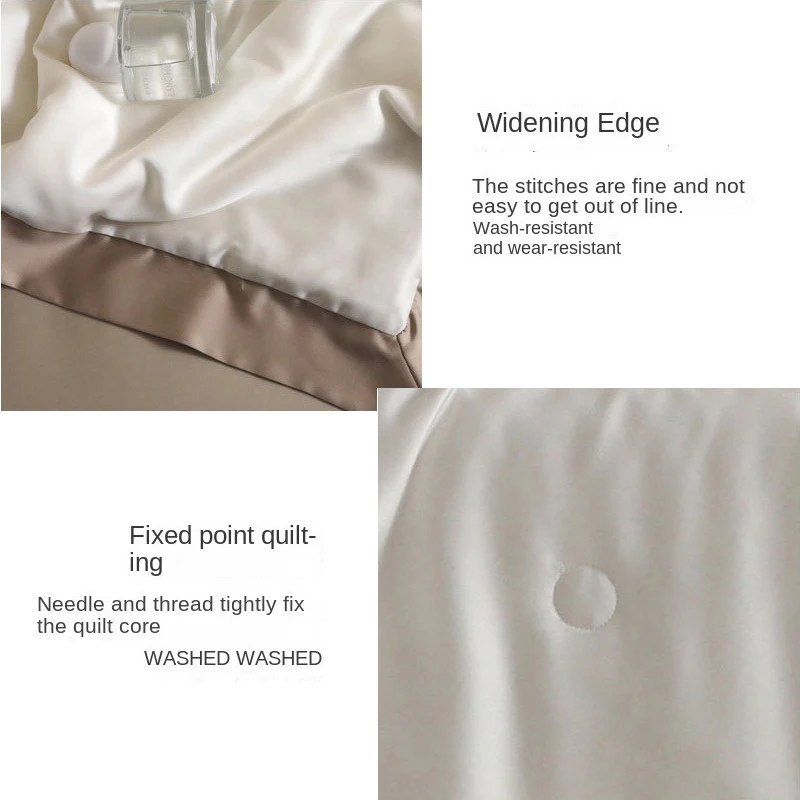
Our detailed guide on how vegan silk is made explores the innovative production processes behind these ethical alternatives.
What Defines a Fabric as “Vegan Silk”?
A fabric qualifies as “vegan silk” when it meets two essential criteria: it contains no animal-derived materials, and it’s specifically designed to replicate the aesthetic and performance characteristics of traditional silk. This definition distinguishes vegan silk from other non-animal textiles that don’t necessarily aim to mimic silk’s properties.
Within the textile industry, terminology can sometimes cause confusion. “Silk alternatives” is a broader category that may include any fabric used in place of silk, regardless of its composition or similarity to actual silk. “Vegan silk” specifically indicates the absence of animal products and intention to replicate silk-like qualities. Meanwhile, “synthetic silk” typically refers to completely human-made materials like polyester satin.
It’s important to note that “peace silk” or “ahimsa silk” – while representing a more humane approach by allowing moths to emerge before harvesting cocoons – still involves animals in the production process and therefore isn’t considered vegan. These distinctions help consumers understand exactly what they’re purchasing when selecting ethical textile options.
For a comprehensive understanding of key differences, our guide on silk vs vegan silk differences provides detailed comparisons.
The Ethical and Environmental Case for Vegan Silk
The primary ethical advantage of vegan silk is the elimination of harm to silkworms. Traditional silk production typically involves killing silkworms in their pupal stage – a practice that raises concerns for those who extend ethical consideration to insects. With approximately 6,600 silkworms required for a single kilogram of silk, the scale of impact is significant.
Many plant-based vegan silk alternatives offer notable environmental benefits. For instance, materials like Tencel lyocell utilize closed-loop production systems that recycle water and solvents, dramatically reducing resource consumption. Bamboo-based fabrics take advantage of bamboo’s rapid growth rate and minimal water requirements compared to many other fiber crops.
Several vegan silk options utilize agricultural by-products or waste materials that would otherwise be discarded. Cupro transforms cotton linter waste into silk-like fabric, while banana and pineapple silks repurpose agricultural residue from food production, creating value from materials that might otherwise become waste.
Consumer demand for these ethical alternatives continues to grow, with market research showing increasing preference for textiles that align with cruelty-free values. This shift is encouraging further innovation and improvement in vegan silk development, making these options increasingly competitive with traditional silk in both performance and aesthetics.
Explore our collection of luxurious vegan silk bedding that combines ethical production with exceptional comfort.
Plant-Based Vegan Silk Varieties
The world of plant-based vegan silk offers remarkable diversity, with each variety bringing unique properties and sustainability credentials:
Lyocell/Tencel (Eucalyptus-derived): Made from sustainably harvested eucalyptus wood pulp through a closed-loop production process that recycles 99% of solvents and water. The resulting fabric offers exceptional smoothness, breathability, and moisture management that closely resembles silk. Tencel has excellent temperature regulation properties and is biodegradable at end of life.
Bamboo Silk: Derived from rapidly renewable bamboo plants that require minimal water and no pesticides to grow. The resulting fabric features a soft, silky hand feel with excellent drape. Bamboo silk excels in moisture-wicking and offers natural antibacterial properties, though the chemical processing required for fiber extraction varies in environmental impact depending on manufacturing methods.
Cupro: Created from cotton linter (the ultrafine, silky fibers that adhere to cotton seeds after ginning) that would otherwise be waste. This semi-synthetic fabric has a remarkably silk-like drape and cooling touch. Its smooth surface makes it particularly beneficial for hair protection and sensitive skin applications.
Lotus Silk: One of the rarest and most labor-intensive vegan silks, created by hand-harvesting the stems of lotus flowers and carefully extracting the fine fibers within. This ancient technique produces an incredibly lightweight, breathable fabric with natural water-resistant properties and a distinctive texture.
Banana Silk: Manufactured from the fibers of banana plant stems that are agricultural waste after fruit harvesting. The resulting fabric is durable with a natural sheen and excellent breathability. Its production requires minimal additional resources since it utilizes existing agricultural by-products.
Pineapple Silk (Piñatex): Developed from pineapple leaf fibers, another agricultural waste product. This innovative material offers durability while maintaining a flexible, soft texture. Each square meter of Piñatex prevents approximately 480 leaves from being burned or discarded as waste.
Our collection of bamboo silk sheets demonstrates how plant-based alternatives can deliver exceptional comfort and elegance.
Semi-Synthetic and Synthetic Silk Alternatives
Semi-synthetic and synthetic silk alternatives represent another important category of vegan silk options, each with distinct properties:
Modal: Derived from beech tree pulp, modal undergoes processing to create a semi-synthetic fiber with exceptional softness and resistance to shrinkage. Its high wet strength makes it more durable than many natural fibers, while its silky smooth texture provides excellent comfort. The production process typically requires fewer chemicals than conventional rayon manufacturing.
ECOVERO: A sustainable viscose alternative made from certified renewable wood sources with transparent supply chains. Its production reduces water impact by up to 50% and emissions by up to 50% compared to conventional viscose. The resulting fabric offers excellent breathability and a silky drape similar to traditional silk.
Rayon/Viscose: One of the earliest semi-synthetic fibers, made from wood pulp processed with chemicals to create cellulose fibers. Traditional viscose production raises environmental concerns due to chemical usage, though newer manufacturing methods have improved its sustainability profile. The fabric offers good drape and a cooling feel against the skin.
Polyester Satin: A fully synthetic option that replicates silk’s smooth surface and sheen through its weave structure rather than fiber properties. While less breathable than natural alternatives, polyester satin offers exceptional durability, wrinkle resistance, and affordability. Advanced manufacturing techniques have improved its hand feel significantly in recent years.
The environmental impact of these options varies considerably based on specific production methods and manufacturing standards. Certifications like OEKO-TEX Standard 100 help identify products made without harmful chemicals, regardless of their base material.
Our detailed comparison of synthetic silk vs natural materials helps consumers understand these important distinctions.
Silk vs. Vegan Silk: The Ultimate Comparison
To make an informed choice between traditional silk and vegan alternatives, it’s helpful to compare their properties directly across multiple dimensions. The following comparison examines key attributes that impact performance, ethical considerations, and practical use cases.
When evaluating vegan silks, it’s important to note that properties vary significantly between different types. The comparisons below will specify which vegan silk varieties excel in particular categories or most closely approximate traditional silk’s performance in specific areas.
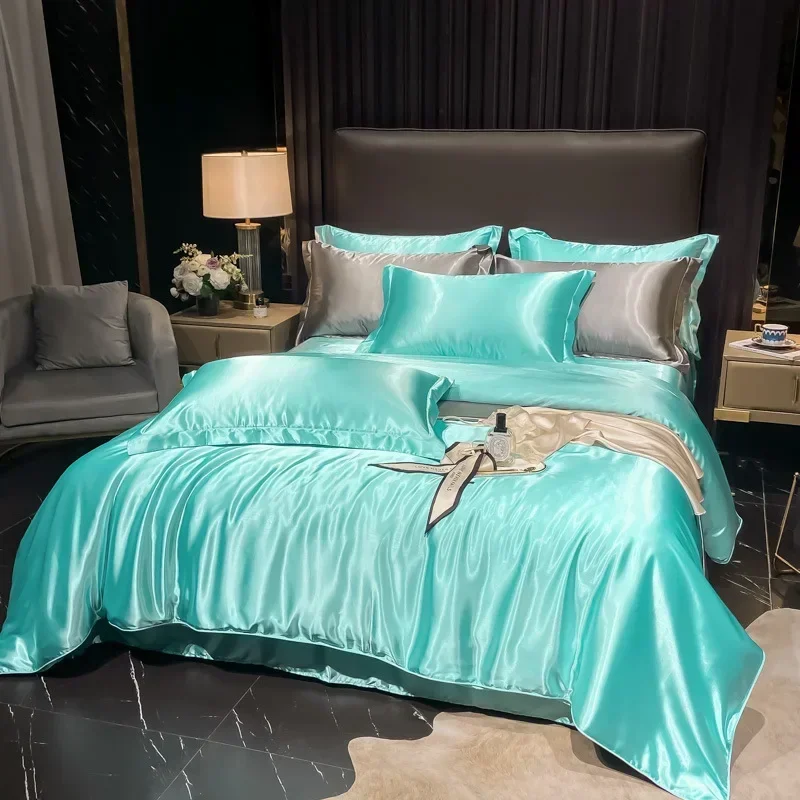
Our comprehensive vegan silk vs natural silk comparison provides further details on how these materials measure up against each other.
Comparative Properties Table
| Property | Traditional Silk | Vegan Silk Alternatives |
|---|---|---|
| Source/Origin | Silkworm cocoons (animal-derived) | Plant fibers, wood pulp, or synthetic materials (no animal products) |
| Ethical Considerations | Conventional production kills silkworms | Cruelty-free, no animal harm |
| Environmental Impact | Moderate water usage, variable chemical processing | Varies widely: from highly sustainable (Tencel, organic cotton) to resource-intensive (conventional rayon) |
| Feel/Texture | Exceptionally smooth, soft with distinctive feel | Varies by type: Tencel and cupro closest to traditional silk feel |
| Luster/Appearance | Natural shimmer with unique light reflection | Good mimicry in cupro and Tencel; less natural sheen in synthetics |
| Breathability | Excellent natural breathability | Plant-based options (especially Tencel) good; synthetics less breathable |
| Moisture Management | Absorbs up to 30% of weight while feeling dry | Plant-based alternatives generally good; synthetics poor |
| Temperature Regulation | Outstanding natural temperature regulation | Varies: plant-based good to excellent; synthetics poor |
| Durability/Longevity | Durable with proper care, but delicate | Generally more resilient to washing/wear than traditional silk |
| Care Requirements | Delicate; hand wash or dry clean recommended | Typically easier care; many are machine washable |
| Price Range | Premium ($$$-$$$$) | Moderate to premium ($$-$$$) |
| Hypoallergenic Properties | Naturally hypoallergenic | Varies; plant-based generally good for sensitive skin |
Our eucalyptus silk sheets demonstrate how plant-based alternatives can provide exceptional comfort with simpler care requirements.
Ethical Considerations: Animal Welfare vs. Production Ethics
The ethical dimension of choosing between traditional and vegan silk extends beyond the immediate question of animal welfare. Traditional silk production necessarily involves the killing of silkworms in their pupal stage, raising animal ethics concerns for many consumers. The scale of impact – thousands of silkworms per garment – makes this a significant consideration for those who extend ethical concerns to insects.
However, ethical evaluation should also consider production practices across the supply chain. Some plant-based alternatives, while cruelty-free regarding animals, may involve questionable labor practices or heavy chemical processing that impacts worker health and local environments. The environmental footprint of certain synthetic alternatives may also raise ethical questions about resource use and pollution.
Various certification standards help consumers navigate these complex ethical considerations. Look for certifications like Global Organic Textile Standard (GOTS), which addresses both environmental and social criteria, or Fair Trade certification, which ensures fair labor practices. For traditional silk, Peace Silk or Ahimsa Silk certification indicates non-lethal harvesting methods, though these still involve animal use.
Our guide to choosing silk cruelty-free options helps navigate these important ethical considerations.
Environmental Footprint Analysis
The environmental impact of textile choices involves multiple factors beyond the simple natural versus synthetic distinction:
Water Consumption: Traditional silk production requires substantial water throughout its lifecycle – from irrigation for mulberry trees to the processing of fibers. Among vegan alternatives, Tencel lyocell stands out for its closed-loop water recycling system that reuses over 99% of water. Bamboo requires minimal irrigation, while conventional cotton (sometimes used in blends) has a notoriously high water footprint.
Land Use: Mulberry cultivation for traditional silk requires dedicated agricultural land. Plant-based alternatives vary widely – bamboo grows rapidly on marginal land unsuitable for food crops, while Tencel sources from sustainably managed forests certified by the Forest Stewardship Council. Materials derived from agricultural waste (banana, pineapple) create value from existing land use.
Chemical Processing: Traditional silk processing often involves chemical degumming agents and dyes. Among vegan alternatives, conventional rayon/viscose raises concerns about chemical solvents, while Tencel and ECOVERO use closed-loop systems that recover and reuse chemicals, minimizing environmental discharge.
Biodegradability: Natural silk biodegrades completely at end of life. Plant-based vegan silks like Tencel, bamboo, and cupro are also biodegradable under proper conditions. Fully synthetic options like polyester can persist in the environment for hundreds of years, contributing to microplastic pollution.
Carbon Footprint: Transportation and processing energy contribute significantly to any textile’s carbon footprint, often exceeding the impact of raw material production. Locally produced textiles generally have lower carbon impacts regardless of material type.
Our detailed guide on the vegan silk sustainable production process explores these environmental considerations in greater depth.
Texture, Feel, and Aesthetics: The Sensory Experience
The sensory experience of textiles plays a crucial role in consumer satisfaction and perceived luxury. Traditional silk offers a distinctive combination of sensory properties that alternatives seek to replicate:
Traditional silk provides an unmistakably smooth, cool initial touch that gently warms to body temperature. Its exceptional drape allows it to flow and move gracefully, while the natural protein structure creates a subtle resistance that distinguishes it from synthetic smoothness. When light strikes silk fibers, they produce a characteristic luminous glow with depth and dimensionality rather than surface-level shine.
Among vegan alternatives, cupro and Tencel lyocell come closest to replicating silk’s overall sensory profile. Cupro excels in recreating silk’s distinctive drape and flow, with a cooling touch similar to the natural fiber. Tencel offers exceptional smoothness with a slightly more substantial feel than traditional silk, while maintaining excellent drape. Its luster has a more subtle quality that mimics silk’s depth rather than surface shine.
Bamboo silk provides excellent softness but with a slightly different hand feel – often described as a cross between silk and high-quality cotton. Its luster tends to be more subtle than traditional silk. Modal offers exceptional softness with good drape, though its visual luster differs from silk’s characteristic glow.
Fully synthetic options like polyester satin can visually resemble silk from a distance but usually lack the distinctive hand feel and temperature-regulating properties that contribute to silk’s sensory appeal. The touch experience typically reveals the difference immediately through a less natural interaction with skin.
Performance and Practical Considerations
Beyond aesthetics, practical performance considerations influence which option best suits different applications and lifestyles:
Durability and Longevity: While traditional silk is stronger than its delicate appearance suggests, it remains vulnerable to rough handling and certain care mistakes. High-quality silk can last many years with proper care, but requires attentive maintenance. Most vegan alternatives offer greater resilience to everyday handling and washing, with plant-based options like Tencel maintaining their appearance through more wash cycles than traditional silk. Fully synthetic options typically offer the greatest durability but may show other signs of wear like pilling or loss of luster.
Care Requirements: Traditional silk often requires hand washing in cool water with pH-neutral detergents, or dry cleaning for certain items. It should be air-dried away from direct sunlight and ironed at low temperatures. Most vegan alternatives permit machine washing on gentle cycles, though plant-based options still benefit from air drying. Synthetic options offer the easiest care, often being machine washable and dryable.
Wrinkle Resistance: Traditional silk varies by weave, with some types wrinkling easily while others (like silk satin) showing better wrinkle resistance. Among alternatives, cupro wrinkles similarly to silk, while Tencel and modal offer improved wrinkle resistance. Synthetic options typically perform best in this category.
Colorfastness: High-quality traditional silk holds dye well when properly cared for, but can fade with sun exposure or incorrect washing. Plant-based alternatives generally offer good colorfastness with proper dyeing techniques. Synthetic alternatives typically excel in this category with superior colorfastness.
Making Your Choice: Finding the Right “Silk” for Your Needs
Choosing between traditional silk and vegan alternatives ultimately depends on your personal priorities and values. While we’ve explored the comparative properties of these textiles, the “best” choice varies based on what matters most to you – whether that’s authentic luxury, ethical considerations, practical maintenance, or specific performance attributes for particular applications.
The following sections provide targeted guidance based on different priority sets to help you navigate these choices with confidence. Remember that there’s no universally “perfect” option – each material offers unique advantages for different needs and values.
Our comprehensive guide to natural silk vs alternative fabrics can help you understand which option aligns best with your specific needs.
For Those Prioritizing Traditional Luxury
If you value the authentic silk experience and its distinctive properties above all, traditional silk remains the benchmark of luxury. When investing in high-quality silk, consider these important factors:
Appropriate Momme Weight: For bedding and garments, 19-25 momme represents the premium range that balances luxurious feel with practical durability. Heavier weights (22-25 momme) offer enhanced durability and opacity, while lighter weights provide exceptional drape for specific applications.
Silk Grade and Quality: Look for Grade 6A Mulberry silk, the highest quality designation. Quality silk should have a consistent color, even texture, and smooth finish without slubs (unless intentionally part of a textured silk like dupioni).
Certification Considerations: OEKO-TEX certification ensures the silk is free from harmful substances, while peace/ahimsa silk certifications indicate non-lethal harvesting methods (though still not vegan).
Care Practices: To maximize longevity, invest in pH-neutral silk wash detergent, wash by hand or on the gentlest machine cycle in cold water, air dry away from direct sunlight, and store in breathable fabric bags rather than plastic.
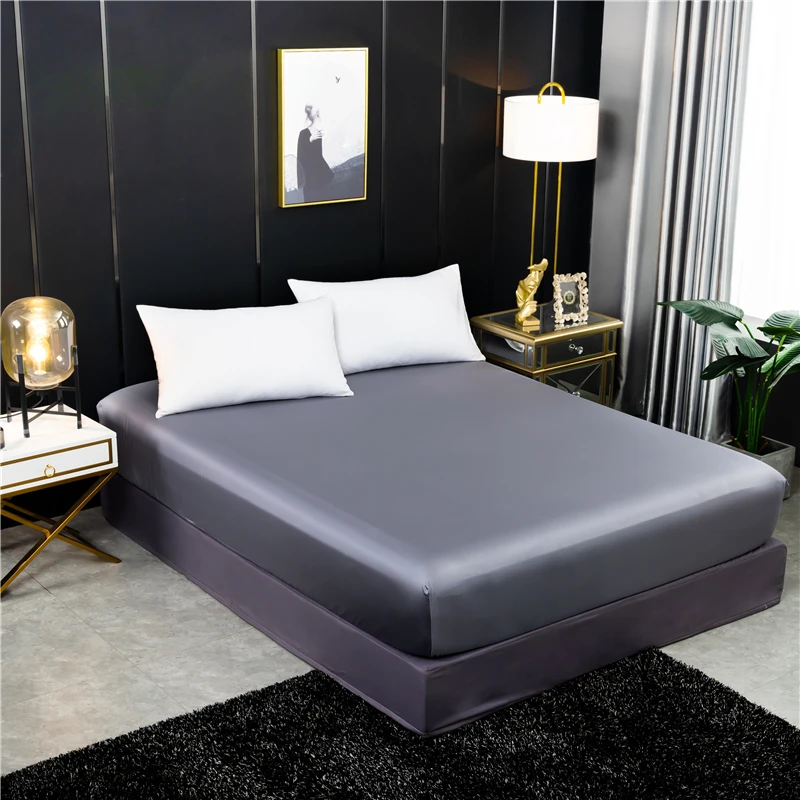
Experience the ultimate in traditional luxury with our 100% silk sheets collection that exemplifies the finest qualities of mulberry silk.
For Those Prioritizing Ethical and Sustainable Choices
If your primary concern is making an ethical and sustainable choice, vegan silk alternatives offer compelling options, though their specific attributes vary considerably:
For Maximum Sustainability: Tencel lyocell stands out for its closed-loop production process, FSC-certified sustainable forestry sources, biodegradability, and excellent performance characteristics. ECOVERO offers similar benefits with improved transparency throughout the supply chain.
For Agricultural Waste Utilization: Materials like banana silk and pineapple silk transform waste products into valuable textiles, reducing agricultural waste while creating income opportunities in producing regions. These options maximize resource efficiency.
For Minimizing Chemical Processing: Organic cotton silk alternatives involve fewer chemicals during production but require more water than some other options. Look for GOTS certification to ensure both environmental and social responsibility.
Important Certifications: Look for OEKO-TEX Standard 100 (verifying freedom from harmful substances), Forest Stewardship Council (FSC) certification for wood-derived fibers, and Global Organic Textile Standard (GOTS) for organic options. These provide assurance about environmental and social responsibility claims.
Learn more about the exceptional benefits of vegan silk bedding for both personal comfort and planetary wellbeing.
100% Silk Sheets, Green Silk Sheets, King Size Silk Bedding Set, Mulberry Silk Bedding Sets, Queen Size Silk Bedding Set
Price range: $1,246.21 through $1,615.22 Select options This product has multiple variants. The options may be chosen on the product pageEucalyptus Silk Bedding Sets, Eucalyptus Silk Sheets
Price range: $360.24 through $393.60 Select options This product has multiple variants. The options may be chosen on the product page- Price range: $267.82 through $306.55 Select options This product has multiple variants. The options may be chosen on the product page
Bamboo Silk Sheets, Cooling Silk Sheets
Price range: $130.76 through $177.80 Select options This product has multiple variants. The options may be chosen on the product page100% Silk Sheets, King Size Silk Bedding Set, Mulberry Silk Bedding Sets, Queen Size Silk Bedding Set, White Silk Sheets
Price range: $1,000.79 through $1,351.42 Select options This product has multiple variants. The options may be chosen on the product pageBamboo Silk Sheets, Queen Size Silk Fitted Sheet
Price range: $230.24 through $297.88 Select options This product has multiple variants. The options may be chosen on the product page
Best Applications for Different Silk Types
Different silk types excel in specific applications based on their unique properties:
Bedding Applications:
* Pillowcases: Traditional silk and cupro excel for hair and skin benefits. Tencel offers similar advantages with easier care.
* Sheets: High momme (22-25) traditional silk provides luxury with durability. Tencel and bamboo silk alternatives offer excellent temperature regulation with easier maintenance.
* Comforters/Duvets: Traditional silk filling offers exceptional temperature regulation but requires special care. Tencel and bamboo alternatives provide similar benefits with simpler maintenance.
Clothing Applications:
* Dresses/Formal Wear: Traditional silk charmeuse and crepe are unmatched for special occasion garments. Cupro provides the closest vegan alternative for drape and movement.
* Everyday Wear: Washable silk or Tencel/modal blends balance luxury feel with practical care requirements.
* Activewear: Silk-modal blends or pure Tencel work well for combining natural feel with performance properties.
Climate Considerations:
* Hot, Humid Climates: Tencel excels in moisture management and cooling properties.
* Variable Climates: Traditional silk and bamboo alternatives offer excellent temperature adaptation.
* Cold Climates: Traditional silk provides warmth without bulk; Tencel and bamboo maintain similar properties.
Our guide to silk bedding alternatives provides specific recommendations for different sleep preferences and needs.
Common Questions About Silk and Vegan Silk
Is vegan silk really as good as traditional silk?
The answer depends on which qualities you prioritize. For exact replication of traditional silk’s distinctive hand feel and natural protein structure, no vegan alternative is identical. However, materials like cupro and Tencel come remarkably close in many performance aspects, while offering advantages in durability and ease of care. Many consumers find these alternatives fully satisfactory once they adjust to the subtle differences.
How can I tell if silk is real or vegan?
The burn test is traditionally used to distinguish natural silk (burns slowly with a smell like burning hair) from synthetics (melt rather than burn). However, advanced plant-based alternatives can be difficult to distinguish without specialized testing. Reputable retailers should clearly identify their materials. When in doubt, request specific information about the fiber content.
Does vegan silk last as long as traditional silk?
Most vegan silk alternatives actually outlast traditional silk in regular use, primarily because they can withstand more frequent washing and rougher handling. Traditional silk requires more careful maintenance but can last decades with proper care. The practical longevity advantage often goes to vegan alternatives for everyday items.
Is peace/ahimsa silk a good compromise?
Peace silk (also called ahimsa silk) allows moths to emerge naturally before harvesting the damaged cocoons. This addresses concerns about killing silkworms but results in shorter, less uniform fibers and a different texture than conventional silk. It represents a middle ground ethically but isn’t considered vegan since it still uses animal products.
Which silk type is best for sensitive skin?
Both traditional silk and many plant-based alternatives like Tencel and organic bamboo silk are excellent for sensitive skin. Traditional silk’s protein structure closely resembles human skin proteins, while Tencel’s extremely smooth fiber surface minimizes irritation. Fully synthetic options generally rank lower for skin sensitivity benefits.
Our detailed analysis of whether vegan silk is as good as real silk explores these quality comparisons in greater depth.
The Future of Sustainable Luxury Textiles
The landscape of luxury textiles continues to evolve rapidly, with innovation addressing both performance and sustainability challenges. Emerging technologies are narrowing the gap between traditional silk and its alternatives while reducing environmental impacts across the board.
Laboratory-grown silk proteins represent perhaps the most promising frontier, with companies developing bioengineered yeasts that produce identical silk proteins without involving silkworms. These proteins can be spun into fibers with properties remarkably similar to natural silk but without ethical concerns. While currently in limited production, these technologies could revolutionize the industry.
Processing innovations are also improving existing alternatives, with new enzymatic treatments replacing harsh chemicals in plant fiber processing. Advanced spinning and weaving technologies are creating ever-closer approximations of silk’s distinctive hand feel and drape from sustainable plant fibers.
Consumer preferences continue driving this innovation, with growing demand for textiles that balance luxury performance with ethical and environmental responsibility. As production scales increase, many alternatives are becoming more affordable while maintaining their quality advantages.
The future likely holds not a wholesale replacement of traditional silk but rather a diversified market of options tailored to different needs and values – from heritage luxury to cutting-edge sustainability.
Can Vegan Silk Ever Truly Replace Traditional Silk?
Whether vegan silk can fully replace traditional silk depends largely on how we define “replacement.” If the standard requires identical molecular structure and the exact sensory experience of natural silk, the answer is currently no – even the best alternatives maintain subtle differences that connoisseurs can detect.
However, if replacement means fulfilling the same functional roles while providing a luxurious experience that satisfies most consumers, several vegan alternatives already qualify. Materials like cupro and Tencel deliver remarkably silk-like performance across most practical applications, with many consumers unable to distinguish them from traditional silk in blind comparisons.
The distinctive qualities that remain challenging to replicate include the exact protein structure that gives silk its interaction with skin and hair, as well as its unique tensile properties – strong when pulled lengthwise but delicate when stressed in other directions. These characteristics emerge from silk’s natural formation process and remain difficult to synthetically reproduce.
Rather than viewing these materials as direct competitors, many luxury markets are embracing them as complementary options that serve different needs and values. Traditional silk maintains its heritage status and unique properties, while innovative alternatives offer new combinations of performance, ethics, and sustainability.
Is Traditional Silk Production Always Unethical?
The ethics of traditional silk production resist simple characterization and depend significantly on individual values and perspectives. While conventional production does involve killing silkworms, ethical evaluations must consider several nuanced factors:
Peace silk or Ahimsa silk offers a compromise approach by allowing the moths to emerge naturally before harvesting the damaged cocoons. This method avoids killing the insects but results in shorter fibers and different textile properties. For some consumers, this represents an acceptable middle ground, though it doesn’t satisfy vegan standards.
Cultural and historical significance also factors into ethical considerations for many people. Silk production has been integral to many Asian cultures for millennia, supporting traditional artisans and cultural practices. These heritage aspects carry significant value for many consumers and producers alike.
Production standards vary dramatically between regions and producers. Some traditional silk operations maintain higher welfare standards for both silkworms during their lifecycle and the workers involved in production. Certifications are increasingly available to help consumers identify producers following better practices throughout the supply chain.
The ethical evaluation ultimately remains personal, depending on how individuals weigh factors like animal welfare, cultural heritage, artisan livelihoods, and environmental impact. There is no universal answer to whether traditional silk can be produced ethically – the judgment depends on which ethical values take priority for each consumer.



